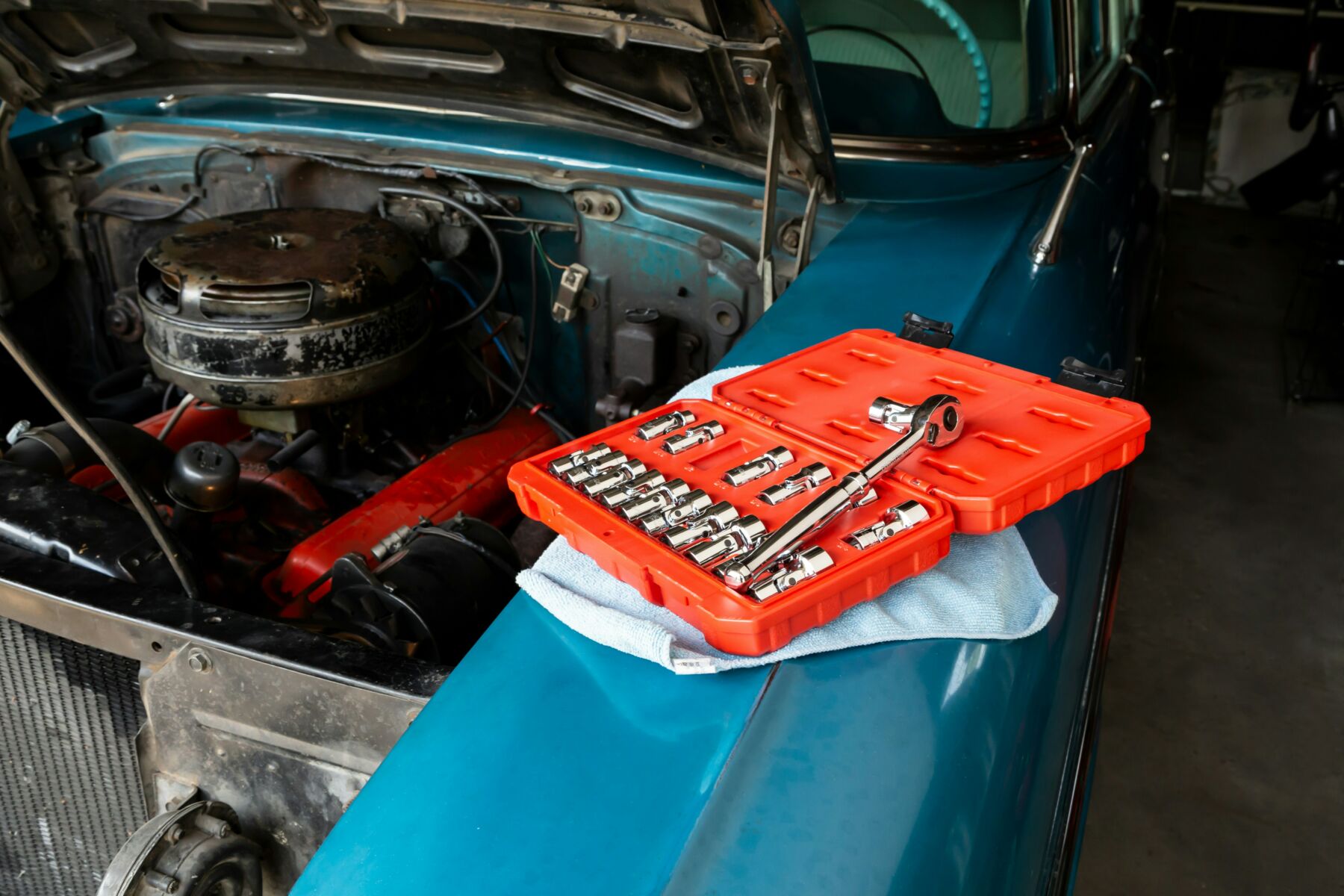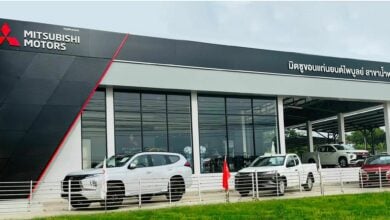10 signs It’s time to replace your vehicle

Have you ever found yourself caught in a predicament, enduring a prolonged wait for your newly procured vehicle following a large-scale event such as the Bangkok International Motor Show? Alternatively, you may have been attracted by the seemingly lucrative discounts presented at mini automobile exhibitions within shopping centres, subsequently left pondering the true value of the transaction.
Within the dynamic urban landscape of Thailand, possessing a dependable, economically viable vehicle that is tailored to one’s requirements is of paramount importance. Yet, what indicators should one pay heed to to discern the appropriate time to replace your current vehicle with a new one?
Understanding when to replace your car
When considering a car replacement in Thailand’s evolving and lively streets, it’s imperative to discern when it’s time to let go of your old vehicle. Consciously observing your car’s conditions and understanding the economic factors at hand can steer you towards an optimal decision.
Economic factors influencing car replacement
Regular refuelling of your vehicle might be part of your routine, yet, if costs seem to keep rising; it’s time to re-evaluate. Modern car options, including energy and money-saving electric vehicles, considerably cut down fuel costs and boast improved performance and reduced carbon emissions. For instance, compared to the 2010 Hyundai Tucson’s 26 combined mpg, the 2022 Tucson Hybrid yields 38 mpg. You could save roughly 600 per year on fuel costs, presuming an average $4 gas price per gallon. Hence, if you’re considering purchasing a new car in Thailand, such fuel-efficient models are worth consideration.
Moreover, bear in mind the frequency of car repairs. Occasional fixes may seem manageable, but frequent issues pushing the repair costs above the price of a new car would necessitate an upgrade. High repair frequency could also indicate a high risk of breakdown, a safety concern for you and others on the road. New cars on the market, replete with safety features including side airbags, electronic stability control, lane assist, and blindspot monitoring, can address such risks.
Signs of physical wear and tear
On the exterior, indications of deterioration provide a discernible reflection of your vehicle’s age. Issues such as blemished or faded paintwork, rust areas, dents, and scratches not only impair the aesthetic attraction of your automobile but can also adversely affect its potential resale value. It’s pivotal to also observe any internal indications. Anomalies such as irregular tyre wear, suspension problems, abnormal engine sounds, emission of smoke, and frequent overheating could all signify a need for significant repair or perhaps even a replacement. It is pertinent to note, that routine maintenance and inspections are essential components in extending the life expectancy and performance of your vehicle.
10 signs It’s time to get a new car

Increasing repair and maintenance costs
The first sign it’s time to purchase a new car in Thailand is soaring maintenance costs. If you’re noticing your vehicle requires frequent trips to the mechanic or garage, affecting your budget, it’s worth considering a vehicle upgrade.
Mileage milestones and vehicle age
An elevated number of kilometres driven and prolonged duration of use are two definitive signs indicating the necessity of a vehicle substitution. Ordinarily, when an automobile exceeds 100,000 kilometres or persists in function for a period exceeding ten years, one may discern an increase in mechanical complications, signifying the appropriateness of procuring a new vehicle.
Safety features and technological advances
Vehicles of an older generation are devoid of contemporary safety functions like collision-avoidance mechanisms, lane-keeping assistance, and emergency braking systems. Should your automobile be absent these advanced specifications, an upgrade would not merely serve to refine your driving experience, but it could potentially be a lifesaving measure.
Changes in lifestyle and family needs
Lifestyle changes often dictate the kind of vehicle you need. If your family is growing or your job now requires more commuting, your current vehicle may no longer suffice. Evaluate your present car against your changing needs to determine if it’s time for a transition.
Fuel efficiency decreases
A drop in fuel efficiency might signal the end of your car’s peak performance years. If you observe that your car now consumes more fuel to cover the same distance, think about investing in a more fuel-efficient vehicle.
Persistent mechanical issues
When your car has constant mechanical problems despite regular servicing or troubleshooting, it might be more cost-effective to replace it. Persisting mechanical issues can lead to unsafe driving conditions and costly repairs.
Lack of modern safety features
The absence of modern safety features in your car signals the need for an upgrade. These include anti-lock brakes, traction control systems and side airbags. If your current vehicle lacks these, it’s time to consider a newer model to ensure safety.
Excessive rust or corrosion
Excessive rust or corrosion, especially on critical parts of the car such as the chassis or around the engine firewall, is a clear sign it’s time to invest in a new ride. These conditions not only make your car look old but can also pose serious safety threats.
Inadequate space for needs
When your vehicle can no longer comfortably accommodate your family or haul your gear, this strongly signals it’s time for an upgrade. The right vehicle should have enough space for all your daily needs and preferences.
High fuel consumption
Fuel economy is a major consideration for car owners in Thailand given the high fuel costs. If your car guzzles fuel like there’s no tomorrow, it’s time to start looking for a fuel-efficient vehicle to save money in the long run.
Evaluating your car’s condition

A crucial aspect of purchasing a new car in Thailand hinges on a thorough assessment of your present car’s condition. Two significant factors in this consideration are gaining professional insights and comparing costs.
Professional inspections and assessments
Professional inspections offer a comprehensive health check for your car. As experts in the field, mechanics can identify issues beneath the surface that may be invisible to an untrained eye. They’re equipped with the knowledge to detect potential problems and the skills to rectify them. You could secure an understanding of whether your car’s health is degrading faster than it should, keeping you at the receiving end of constant issues.
Furthermore, understanding your car’s maintenance history plays a vital role too. Regular upkeep might extend your car’s lifespan, while irregular maintenance or none at all might lead to serious mechanical issues. This fact could also impact the resale value of your car if you decide to trade it in. Therefore, keeping track of your car’s maintenance records is indispensable when determining its condition.
Comparing costs: Repair Vs. replace
One significant indicator that it’s time to buy a new car is when the cost of repairs and maintenance starts to outweigh the cost of the car itself. Additionally, constant breakdowns not just cost money, but also time, and it can deplete your patience with your plague-ridden vehicle.
Instead of being involved in this cycle of breakdown, repair, and repeat, consider the total costs. Tally up repair bills over the past few years plus the estimated costs for potential future repairs. Then, contrast this with the price of a new car. In most cases, when your repair costs start closing in on the price of a newer car, it’s financially prudent to consider replacing rather than repairing. Bank on your car’s current condition and use that as a stepping stone towards your new purchase.
Navigating the car buying process in Thailand
In this section, we’ll navigate through the intricate process of procuring a car in Thailand. This involves understanding its ins and outs, from gruelling ownership regulations to the precise steps to purchase a new car.
Understanding ownership regulations
Getting acquainted with Thailand’s ownership regulations is a priority. The government mandates certain conditions that allow foreigners to purchase vehicles within the country. Undertaking this step with fiducial diligence, by liaising with local authorities or seeking the expertise of professional advisors, ensures a hassle-free, lawful transaction. It’s a critical aspect of decision-making that provides you not just with legal compliance but also the added confidence to glide smoothly through the process.
Steps to purchase a new vehicle
Purchasing a new vehicle in Thailand isn’t an abrupt process. It’s a carefully devised sojourn that begins with the identification of the car you desire. Once the choice narrows down to specific models, the following step is to assess the financial implications. This evaluation includes the cost of the car, possible financing options, and insurance coverages.
Next, it’s about purchasing at an authorised Thai vehicle dealership. The dealership assists you in navigating paperwork like the Vehicle Registration Book, compulsory motor insurance, and road tax stickers. Additionally, you need to understand the local driving rules and regulations for a safe and compliant driving experience in Thailand.
As you wrestle with the discomfort of a faulty car AC, understanding the potential causes becomes crucial. This section dissects the common reasons causing your car AC to malfunction.

































